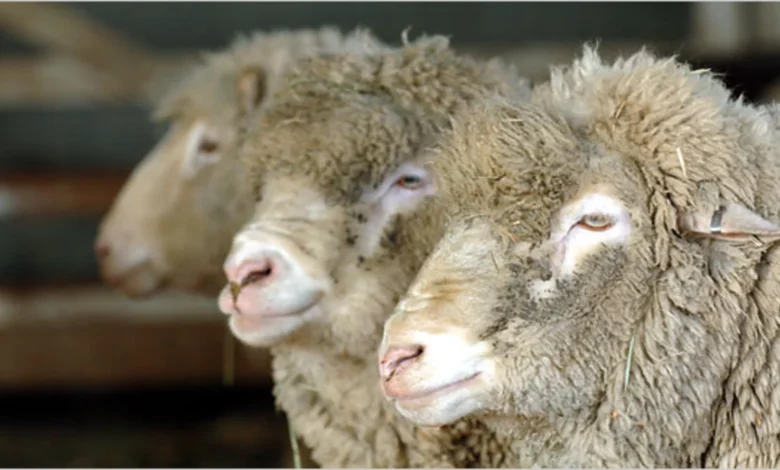Exploring Ewe Said It NYT: A Closer Look at the Popular Phrase and Its Meaning

What is “Ewe Said It NYT”? An Introduction to the Phrase
The phrase “Ewe Said It NYT” has taken on a life of its own in popular culture. Its quirky, intriguing wording has sparked a wide range of interpretations and questions. Many people find themselves wondering where it came from and what it means. The play on words in “Ewe Said It NYT” invites curiosity, humor, and sometimes confusion, but that’s part of what makes it interesting. The phrase combines a reference to “we,” which refers to a female sheep, with the idea of something said in a noteworthy way.
Much of the intrigue around “Ewe Said It NYT” can be traced back to the unique combination of language and pop culture references. It has often been tied to New York Times references, shorthand internet language, or even specific memes. This playful phrase has grown into something of a cultural artifact as people continue to find new meanings and use it in various forms of online and social media discussions. Understanding what “Ewe Said It NYT” represents requires diving into its background and the multiple interpretations it has gained.
The Origins of “Ewe Said It NYT”: Where Did It Come From?
Tracing the roots of “Ewe Said It NYT” can be a bit challenging, as it appears to have evolved from several different linguistic and cultural sources. Some say it originated as an internet joke or meme, where people began to use animals, especially sheep, in humorous ways to express opinions or to make a statement. The ewe, specifically, became a kind of character in these expressions, adding a whimsical touch to the commentary.
The NYT part of the phrase is often associated with the New York Times. Many speculate that the phrase was first used in connection with news reporting or opinion pieces, perhaps as a humorous take on statements made in the media. By using “Ewe Said It NYT,” people could add a layer of irony or humor to a serious statement. Although its precise origins are hard to pin down, the term has become a versatile expression that allows for playful language and unique interpretations.
Understanding the Double Meanings Behind the Phrase
One of the reasons “Ewe Said It NYT” has become so popular is its clever use of double meanings. The phrase plays with the homophone “ewe” and “you,” making it sound as though someone is saying, “You said it,” while adding a humorous twist with the sheep reference. This makes it an ideal phrase for online conversations, where people often look for clever and memorable ways to express agreement or to respond humorously to something said.
The NYT aspect, while often associated with the New York Times, also has a layer of mystery. It could signify “Not Yet Tried,” “New York Times,” or simply be a play on initials that add a sense of authority to whatever has been “said.” For people familiar with internet culture, “Ewe Said It NYT” represents the playfulness of online language and the ways in which people reinvent phrases for entertainment. The phrase encapsulates a certain light-heartedness, allowing people to participate in a humorous, layered conversation.
The popularity of “Ewe Said It NYT” in Memes and Social Media
Social media has played a major role in the spread of “Ewe Said It NYT.” Platforms like Twitter, Instagram, and TikTok are full of posts where people use the phrase to add a humorous comment or to engage in witty banter. The phrase’s use of wordplay makes it ideal for memes, as people can incorporate images of sheep, cartoons, or visual puns to enhance the humor. The “ewe” component, in particular, has made it easy for meme creators to use visuals that amplify the comedic value.
Memes using “Ewe Said It NYT” often involve scenarios where someone might want to emphasize an opinion with a touch of irony. The image of a sheep, combined with clever text, gives the meme a unique charm that resonates with audiences. This has helped the phrase become a staple in internet humor, where it continues to be reinvented and reshaped according to the trends and styles of different social media platforms.
The Role of “Ewe Said It NYT” in Pop Culture

Beyond its internet fame, “Ewe Said It NYT” has seeped into other aspects of pop culture. The phrase has appeared in various forms of media, including TV shows, online articles, and even in music lyrics. Its quirky, catchy nature makes it ideal for reference in pop culture, as it can be used in a variety of contexts. Some comedians have used it in their stand-up routines, while others have referenced it in sketches or parodies, contributing to its status as a recognizable, lighthearted phrase.
The impact of “Ewe Said It NYT” on pop culture is a testament to its versatility and the way it resonates with audiences who enjoy wordplay and humor. As a phrase that straddles the line between satire and cultural commentary, “Ewe Said It NYT” has managed to capture a unique place in pop culture. Its ability to evolve with each new use shows that it is more than just a phrase; it’s a part of a larger trend where language and humor intersect.
Why “Ewe Said It NYT” Has Endured in Internet Culture
One of the reasons “Ewe Said It NYT” has maintained its popularity is its flexibility. People can use the phrase in a variety of situations, whether they are agreeing with someone, making a witty comment, or adding a playful twist to a serious discussion. The phrase’s adaptability has helped it endure, even as new phrases and trends continue to emerge in internet culture.
Its enduring appeal also speaks to the power of humor and wordplay in online communities. The phrase taps into a shared understanding of language and irony, making it accessible and engaging. People feel connected when they use “Ewe Said It NYT,” as it brings a sense of community and shared humor to conversations. The phrase has become a small but meaningful part of how people communicate online.
The Future of “Ewe Said It NYT” in Language and Humor
As language and internet culture continue to evolve, it will be interesting to see where “Ewe Said It NYT” goes next. The phrase has already proven its ability to adapt and remain relevant, and it will likely continue to be a part of internet humor for years to come. New interpretations and uses will likely emerge, adding even more layers to its meaning and further cementing its place in the lexicon of internet phrases.
“Ewe Said It NYT” has shown that language can be fun, flexible, and full of surprises. Its combination of humor, irony, and wordplay makes it a lasting example of how phrases can take on a life of their own in internet culture. As new generations embrace and reinterpret the phrase, “Ewe Said It, NYT” will continue to thrive as a unique and beloved part of online conversations.
Conclusion: The Legacy of “Ewe Said It NYT”
The phrase “Ewe Said It NYT” is a perfect example of how internet culture can turn something simple into something memorable and iconic. It has become a part of the language we use to express humor, agreement, and irony, reflecting the playful side of communication. By blending elements of wordplay and pop culture, “Ewe Said It NYT” has carved out its place in the world of internet humor, where it will likely remain for years to come.
Whether used in memes, social media posts, or casual conversations, “Ewe Said It NYT” serves as a reminder that language is constantly evolving and that humor can bring people together in unexpected ways. The phrase has grown from a quirky, niche saying to a cultural reference point, proving that sometimes, the most memorable phrases come from the most unexpected sources.
Let me know if you’d like to expand on specific headings or add more detail to each section. This structure provides a comprehensive yet flexible exploration of “Ewe Said It NYT,” emphasizing the unique role it plays in internet culture and language.




